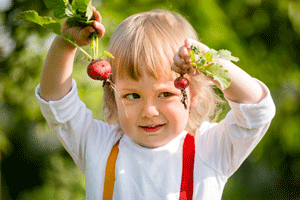Gardening tips for beginners
If you have never had a garden before but want to try, it’s worth the effort. Growing your own food benefits your diet as well as your exercise routine. Here are some tips to get you started:
Know your soil
How compact is your soil? If your soil is too compact it can be difficult for plants to grow roots. You may want to add soil, mulch and/or compost before planting and aerate as much of the soil as possible. If you already have very fertile soil you may consider “turning over” your garden soil so you do not disturb the life that is already living in your top soil. The insects, bacteria and earthworms that are crawling in your soil are very helpful to your plants survival. They will help naturally aerate your plants roots and assist in getting water to the roots.
Make a plan
Why do you want a garden? How much time are you willing to dedicate to the garden? What kind of garden will you have? What kinds of plants can you grow in your soil? Answering all these questions will help build the perfect garden for you. If you would like to have a garden for fresh produce but do not have a lot of time to tend to it, you may choose to transplant already established plants. This allows you to plant later in the season. Choose plants that are more difficult to sprout from a seed but need little attention after established. You may choose from the list of “easy plants.”
Research plants
This will help you decide how much effort you want to put into your garden and how much time you will spend caring for your garden. The plants in the sidebar to the right need little attention. After planting you can leave them to grow on their own (aside from watering). However, make sure that you have plenty of space in your garden if you choose to plant zucchini. This plant gets fairly large at its peak. One vine can easily occupy as much as 10- to 16-square feet, depending on its variety. If planting seeds, plant in raised rows with 36 to 48 inches between them.
Keep a map or label your garden
This way what is growing will not be a mystery — unless you like surprises.
Have patience
Patience in gardening is key. If you do not see a sprout the day after you plant the seed, it’s OK. Sometimes when you worry too much about your plants, overwatering and over-handling can happen which will — in turn — affect your crop.
Not every plant will be a success but it’s fun to experiment with a variety of fruits and vegetables. And next year, your garden will be even better.
Start with “easy” plants
- Zucchini
- Tomatoes
- Cucumbers
- Green beans
- Radishes
- Carrots
- Lettuce
- Onions
- Strawberries
